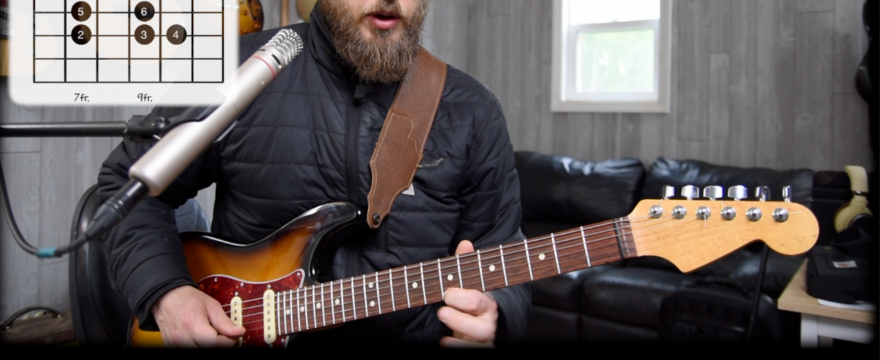A Different Way To Practice Scales | Using Chord Shapes to Anchor Scale Patterns
In this lesson I provide an introduction for a different way to practice scales. It is different from the traditional approach because it uses chord shapes to anchor scale patterns.
What this means is that you can conceptualize the position of the guitar you are in by thinking of chord shapes. Those chord shapes have scale patterns that surround them! You can create a more functional understanding by practicing the scales in relation to the local chord shapes.
When you look at scales in this way, you can see that chords and arpeggios also fit into this perspective. They are all important pieces of the same puzzle! The puzzle is the fretboard, which can be intimidating. However, if you know how scale patterns fit over chord patterns you can easily move to different areas of the guitar.
Thinking in this way can lead to a fluid approach to playing over chord changes. By thinking in chord “shells” you can start to build bridges between different areas of the neck.
This type of thinking is what allows guitarists to play chord melodies fluidly across the fretboard. One of the great masters of solo guitar playing is Joe Pass. You can see when you watch him that in every part of the fretboard he knows exactly what notes (scales) he can play, but also what chords fit into that area.
Here is a great example of Joe Pass performing solo
There are a lot of ways to build up this kind of understanding. In today’s lesson I tried to create an introduction that I thought would be a good way to enter into this way of thinking. I hope you find it helpful!
I will be releasing a course in the near future that dives very deeply into this concept. I’m doing this because I think it is an extremely functional and useful idea! When you see the whole fretboard as a continuous pattern of scales, chords and arpeggios you can truly experience the freedom that it provides.

Leave a Reply
You must be logged in to post a comment.